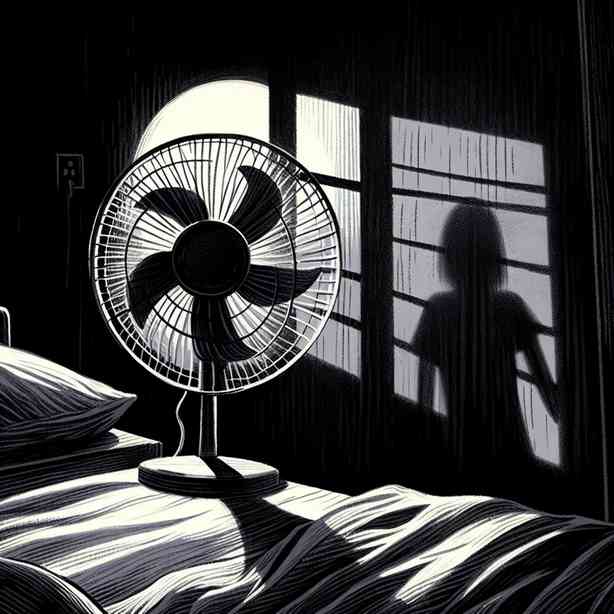
The strange noise coming from the fan at night can easily disrupt your sleep, create an uneasy atmosphere, and leave you wondering about its origin. Fans are common household appliances used for cooling, ventilation, or even aesthetic appeal, but they can also be a source of unexpected disturbances. In this article, we will delve deeply into the various sounds a fan can produce, their potential causes, and how to address them. By the end, you will have a better understanding of your fan’s quirks and how to maintain a peaceful environment in your home.
First, let’s discuss the most common sounds that fans make. The whirring noise of blades rotating at high speed is generally pleasant and indicates that the fan is functioning properly. However, when this sound transforms into a grinding, rattling, or buzzing noise, it can indicate that something is amiss. Each of these sounds has distinct causes and solutions, which we will explore in detail.
A grinding noise usually suggests that the fan blade is hitting something or that there is a problem with the motor bearings. Over time, dust and debris can accumulate, leading to interference with the fan’s movement. Regular cleaning can often remedy this issue. If cleaning does not resolve the noise, you might consider checking the alignment of the fan blades and ensuring they are not bent or damaged.
Another common sound is a rattling noise. This noise can arise if the fan is not securely mounted or if parts have become loose over time. Ensuring that all screws and mounting hardware are tight can help eliminate this disturbance. If the fan still rattles even after checking its mount, you may want to inspect the fan for any loose internal components, which may need to be reattached or replaced.
A buzzing noise is also commonly reported and can be caused by electrical issues. Fans that are connected to a dimmer switch may create a buzzing sound due to fluctuations in power. In such cases, it might be worth upgrading to a fan-compatible dimmer switch or consulting an electrician to examine your wiring. Keeping your fan out of the circuit of dimmer switches can help in reducing the noise significantly.
Understanding the context in which the fan is operating can also provide clues to the source of the noise. For example, if the fan is operating in a humid environment, it may be more prone to rust and corrosion, which can lead to unusual sounds. Proper maintenance, including regular inspections for signs of wear and tear and lubrication of moving parts, can significantly extend the life of your fan and keep noise levels down.
Sometimes, the time of night can heighten these noises. At night, external sounds may be reduced, making it easier to hear the faintest noises, including those from the fan. This heightened awareness can lead to an increased perception of noise, causing it to seem more significant than it might during the day. If you’re particularly sensitive to noise at night, you might want to consider using white noise machines or sleep aids that can blend with, or mask, the fan’s sounds.
Moreover, the age and type of fan can significantly influence the nature of the sounds it produces. Older fans are more likely to develop issues due to wear and tear, whereas newer models often come equipped with better engineering and materials designed to minimize noise. If you find that the noise from an older fan is too bothersome, it may be worth investing in a newer unit designed for quieter operation.
In addition to the physical aspects of the fan, consider the placement of the unit within your home. A fan that is too close to a wall or other objects can create noise as the airflow is obstructed. Ensuring that there is ample space around the fan can help promote unobstructed airflow and reduce noise.
Fans that are poorly designed or lack quality materials may also contribute to noisy operation. If you’ve taken all the necessary maintenance steps and the noise persists, it may be an indicator of a poor-quality fan. In such cases, you might want to review customer insights or consider investing in a fan known for its quiet operation. Reading product reviews prior to purchase can help you select a fan that meets both your functional needs and your noise tolerance.
Furthermore, consider the technological advancements in fan design. Modern fans often come with features that not only enhance their functionality but also improve their noise output. For instance, some fans now include brushless motors that operate more quietly than traditional ones. Investigating these advancements might lead you to a more suitable fan for your space.
Lastly, if you’ve gone through all these steps and the noise from your fan remains bothersome, it might be beneficial to consult a professional. An electrician or appliance repair technician can provide insights into whether the fan needs repairs or if it might be advisable to invest in a replacement. It’s important to remember that a well-functioning fan not only provides comfort but also contributes to your overall well-being by promoting a peaceful sleep environment.
In conclusion, while the strange noise emanating from a fan at night can be unsettling, it often has identifiable causes and practical solutions. By understanding the different types of sounds a fan can make, inspecting its components, and considering both environmental factors and technological advancements, you can significantly reduce or eliminate disturbances. If you find that the noise continues to be an issue despite your best efforts, seeking professional advice may be your next best step. Ultimately, a quiet, well-functioning fan contributes to a restful night’s sleep and a more serene living space.


